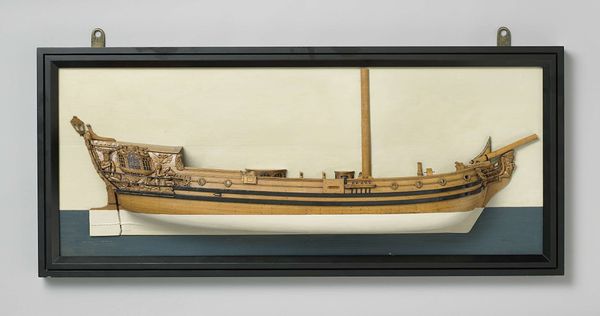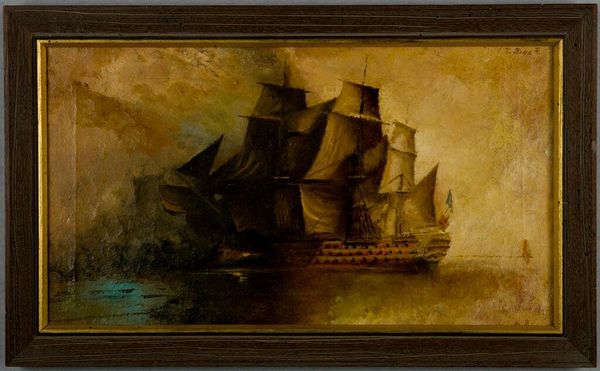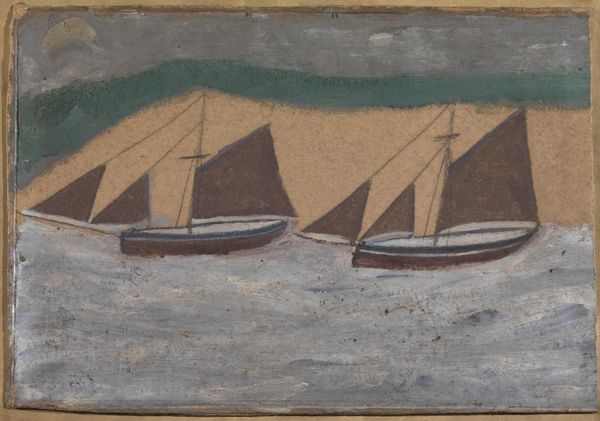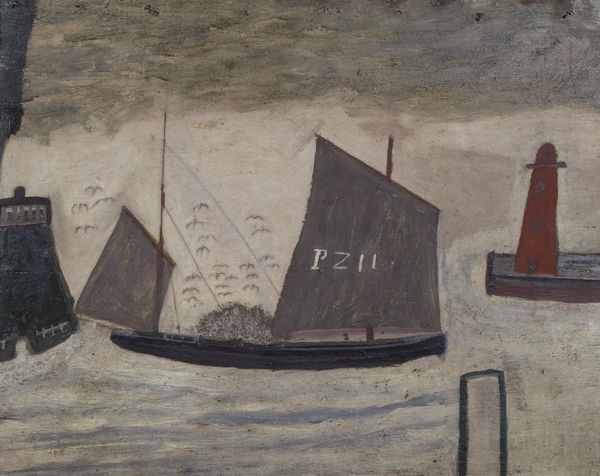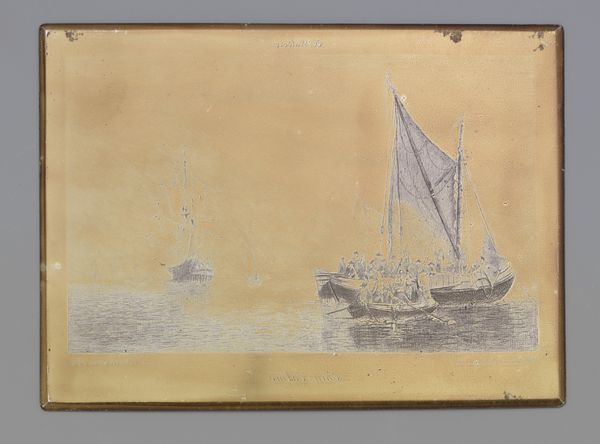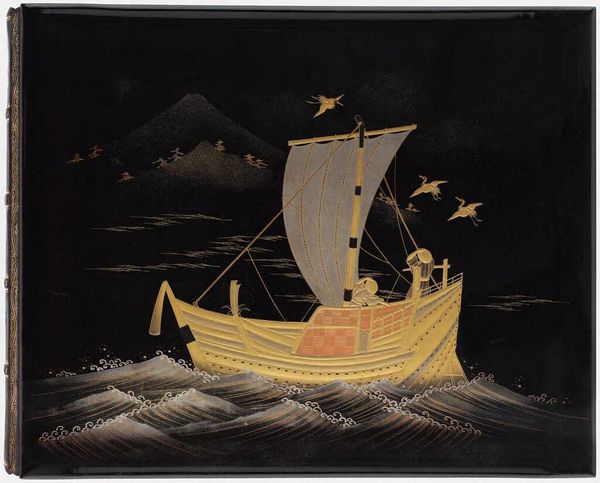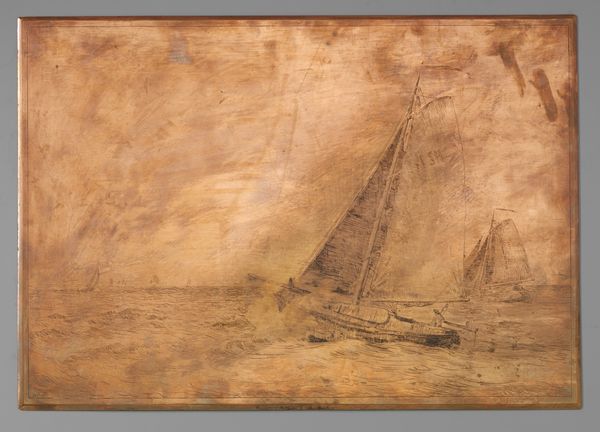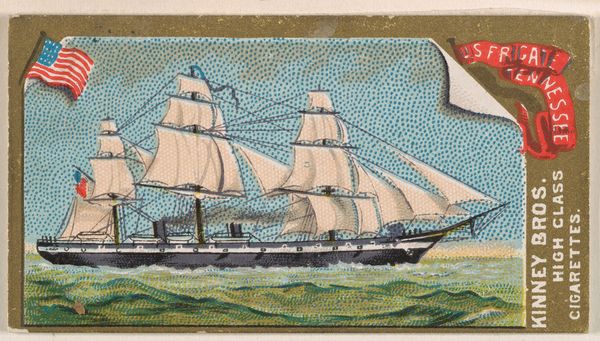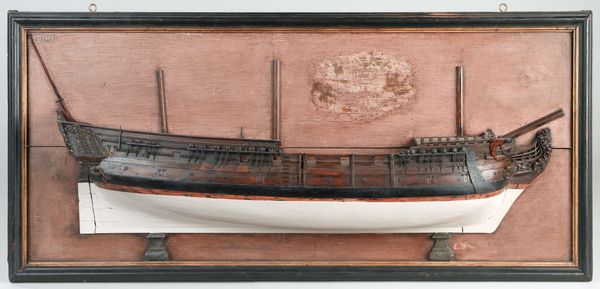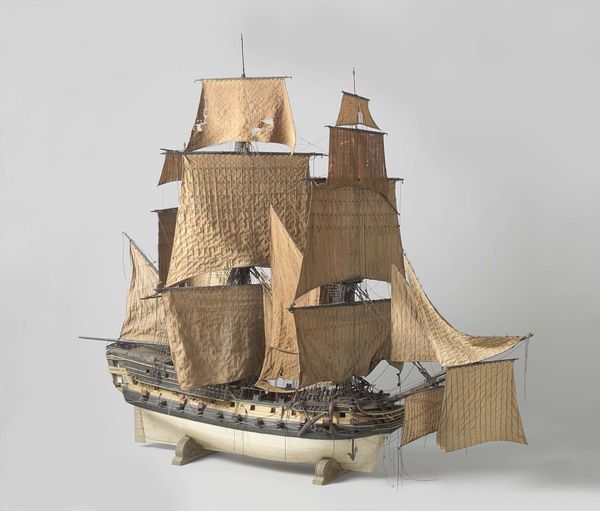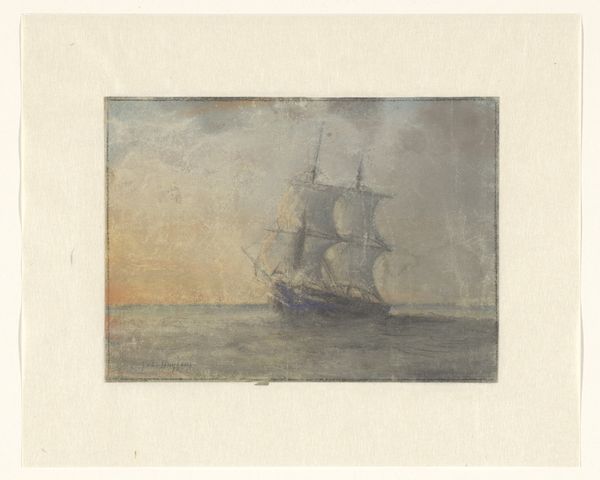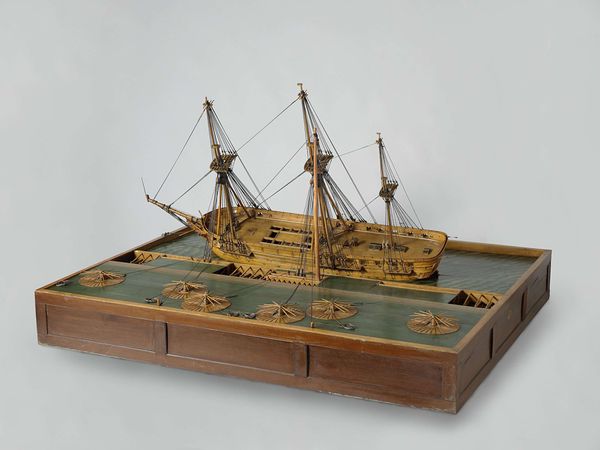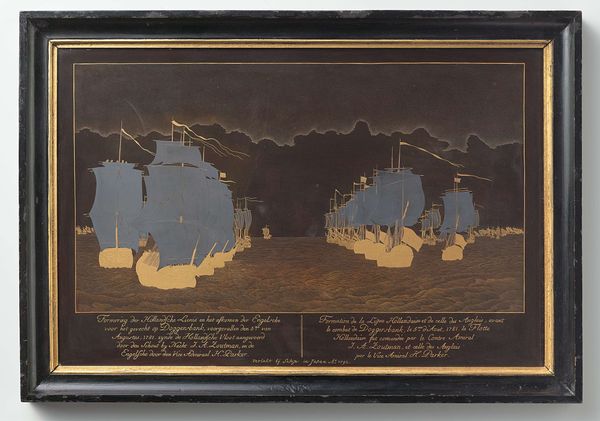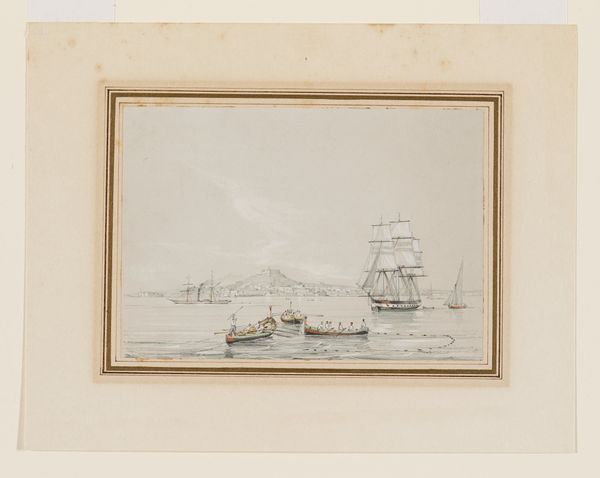
Dimensions: length 54 cm, width 88.8 cm, height 11 cm
Copyright: Rijks Museum: Open Domain
Curator: Here we have "Shadow Box with Two Ships," a captivating mixed-media assemblage, created sometime between 1850 and 1900. Editor: My immediate impression is a feeling of intense romantic drama. The stark contrast between the white sails and the somber, almost threatening, sky creates a really powerful visual tension. Curator: Indeed, the image immediately brings to mind ideas of exploration and maritime trade, with ships serving as symbols of both promise and peril. I see strong undercurrents of Romanticism, particularly in the idealized portrayal of nature and the sublime power of the sea. Editor: Absolutely. Notice how the artist has carefully arranged the ships within the frame, positioning the larger ship centrally and the smaller one to the side? The visual effect is like that of a stage set, drawing the viewer into the depicted narrative. The almost sculptural quality of the materials and the sharp angles of the ships against the water, add to this impression of a dynamic performance held within a confined space. Curator: That's a crucial observation. It feels symbolic, as if the entire world and its possibilities are constrained by societal limits or maybe even the artist’s personal experience, echoing themes present in 19th-century Romantic thought. The light and shadow play here evokes profound emotion. Editor: The formal composition reinforces that emotional tension, I agree. Consider the placement of that moon, barely visible through the clouds. It acts like a distant hope, counterbalancing the potentially overwhelming nature of the stormy sea and the ships themselves. It guides our eye through a sea of churning colors and varied forms. Curator: Furthermore, shipwrecks and perilous voyages are consistent symbols throughout different historical periods, reminding viewers of mortality and testing human spirit. Flags give some idea of nationality, and possibly a signal, so perhaps here, there's a conscious reflection on collective histories. Editor: Yes, and I would like to observe that the visual impact relies as much on what is absent as on what's present. There's an openness that urges us to envision what happened prior and speculate about the journey of those sailors. Curator: These different components combined give it significant visual presence as a physical manifestation of historical continuity, revealing so many symbolic connections through just a basic maritime landscape. Editor: Indeed, a piece like "Shadow Box with Two Ships" exemplifies how close inspection of composition, color, and texture enriches our interpretation, bringing to light even larger historical themes, expressed visually, of trade, identity, and exploration.
Comments
No comments
Be the first to comment and join the conversation on the ultimate creative platform.
